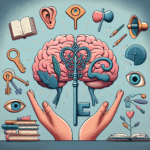
Introduction
In a world propelled by the relentless advancement of technology and globalization, education stands as a critical pillar in shaping societies and empowering individuals. Yet, despite considerable progress, gender disparities in educational opportunities continue to mold the lives of countless women and girls, effectively stunting both personal growth and societal development. Education for All: Bridging the Gender Gap in Learning Opportunities is not just an ideological pursuit; it is a critical imperative for sustainable growth and equality.
The journey toward educational equity isn’t merely about statistics; it’s about the stories hidden behind those numbers—stories of ambition, struggle, and triumph. By understanding these realities and implementing meaningful strategies, we can create an educational landscape where everyone, regardless of gender, has equal access to learning opportunities. Join us as we delve deeper into this pressing issue that defines our time.
The State of Gender Disparities in Education
Current Global Landscape
While access to education has broadened over the decades, it remains uneven geographically and socio-economically. As per UNESCO’s Global Education Monitoring Report, around 132 million girls worldwide are out of school, highlighting a persistent crisis in gender equity. The data reveals that girls are more likely than boys to be denied education, particularly in regions affected by conflict, poverty, and cultural bias.
| Region | Percentage of Out-of-School Girls | Population of Girls Out of School |
|---|---|---|
| Sub-Saharan Africa | 34% | 53 million |
| South Asia | 12% | 20 million |
| Arab States | 2% | 1 million |
| Eastern and Southern Asia | 6% | 6 million |
Barriers to Education
To tackle the challenge of Education for All: Bridging the Gender Gap in Learning Opportunities, it’s vital to understand the barriers preventing girls from accessing education. These include:
- Cultural Norms: In many societies, traditional beliefs prioritize boys’ education over girls’.
- Economic Constraints: Families in poverty often cannot afford the costs associated with schooling, such as uniforms and supplies.
- Safety Concerns: In regions plagued by violence, the journey to school can be perilous for girls.
- Lack of Female Role Models: The absence of women teachers can deter girls from pursuing education.
Case Study: Afghanistan’s Educational Landscape
Afghanistan delivers a poignant example of the complex barriers hindering education for girls. After the fall of the Taliban regime in 2001, girls’ enrollment in schools significantly increased, from virtually zero to over 3 million by 2018. However, ongoing conflict and cultural attitudes continue to jeopardize this progress.
Here’s a snapshot of the situation:
| Year | Total Enrollment (Girls) | Challenges Faced |
|---|---|---|
| 2001 | 0 | Under Taliban rule, girls were banned from education. |
| 2010 | 2 million | Security concerns, insufficient female teachers. |
| 2018 | 3 million | Renewed Taliban influence led to school closures. |
The Afghan experience underscores the need for comprehensive strategies tailored to each unique context, addressing both cultural and structural barriers.
Strategies for Bridging the Gap
Policy Reforms
Governments play a pivotal role in ensuring that Education for All: Bridging the Gender Gap in Learning Opportunities transitions from concept to reality. Policy reforms aimed at increasing funding for girls’ education, implementing gender-sensitive curricula, and promoting female leadership in educational institutions are crucial steps. For instance, countries like Rwanda adopted policies mandating that at least 30% of leadership positions be held by women, paving the way for female empowerment in education.
Community Engagement
Community involvement is equally essential. Local leaders, parents, and educators must unite to create supportive environments for girls. Initiatives like “Girl-Friendly Schools” can be instrumental in fostering safe spaces for learning. By integrating gender equity into community discussions, we can dismantle malicious norms that inhibit educational access.
Leveraging Technology
The digital revolution offers innovative solutions for bridging gender gaps in education. Technology-infused learning platforms can reach girls in remote areas, bypassing geographical barriers. The “Dost” app, launched in Pakistan, provides free educational resources for girls, enabling them to learn at their own pace and convenience. This example illustrates how leveraging technology can expand access and equity in education.
Case Study: A Success Story in Rwanda
Rwanda serves as an inspiring beacon for gender equality in education. After the 1994 genocide, the Rwandan government prioritized education as a means of societal reconstruction. Policies were enacted to ensure free primary education and recruit female teachers. The result? Female enrollment in primary education surged from 31% in 1990 to 98% in 2017.
Key Elements of Success:
| Element | Description |
|---|---|
| Government Commitment | National policies focused on gender equality in education. |
| Community Mobilization | Local initiatives to promote girls’ education and involvement. |
| Teacher Training | Investment in training female educators to serve as role models. |
Rwanda’s experience shows that sustained political will, community engagement, and targeted initiatives can bridge the learning gap effectively.
The Role of Non-Governmental Organizations (NGOs)
Numerous NGOs worldwide are stepping in to fill the gaps often left by governmental efforts. Organizations like Plan International and Girls Who Code advocate for girls’ education and empowerment.
Programs That Make a Difference:
- Plan International’s “Because I Am a Girl” Campaign: This initiative aims to break down barriers to girls’ education through grants, scholarships, and community programs.
- Girls Who Code: Focused on closing the gender gap in technology, this initiative teaches girls coding skills, empowering them for future opportunities.
By partnering with local communities and leveraging resources, NGOs enhance the reach and impact of educational initiatives.
Data-Driven Approaches
The Power of Data Analytics
Implementing data analytics can shine a light on problem areas, from school dropouts to gender-specific barriers. Schools and governments can utilize analytics to develop targeted interventions.
Example: A recent analysis from the World Bank indicated that countries with robust data systems saw a 25% increase in girls’ enrollment over five years. Such insights offer powerful leverage for policymakers to make informed decisions.
Monitoring Progress
Monitoring frameworks are essential to assess the effectiveness of educational initiatives. Countries like Sweden have implemented comprehensive monitoring systems that track gender disparities, helping identify gaps and create responsive strategies.
Conclusion
Education is not merely a pathway to personal development; it is a fundamental human right. Education for All: Bridging the Gender Gap in Learning Opportunities must be a collective endeavor, engaging governments, communities, and individuals. When we empower girls with education, we foster entire generations capable of lifting societies out of poverty, advancing equality, and building sustainable futures.
By staying committed and implementing strategic actions, we can transform our educational landscapes into systems that equip every individual—regardless of gender—with the tools necessary for achievement. It is in our hands to dismantle the barriers standing in the way of opportunity and to usher in a brighter, equitable future.
FAQs
1. Why is bridging the gender gap in education important?
Bridging the gender gap in education is essential for empowerment, economic growth, and societal development. Educated women and girls are more likely to contribute positively to their communities, reduce poverty, and enhance public health.
2. What are some successful programs that support girls’ education?
Programs like Plan International’s “Because I Am a Girl” and Girls Who Code are successful in promoting girls’ education and empowerment, providing resources, and skills development to foster future opportunities.
3. How can technology help in bridging the gender gap in education?
Technology can provide remote learning opportunities, access to resources, and self-paced learning, making education more accessible for girls, particularly in underserved areas.
4. What role do parents play in supporting girls’ education?
Parents can advocate for their daughters’ education, promote a culture that values girls’ learning, and seek out resources or community programs that support educational attainment.
5. How can communities contribute to overcoming barriers in girls’ education?
Communities can establish programs to raise awareness about the importance of girls’ education, create safe learning environments, and support initiatives that encourage female leadership in education.
Through the learning experience, it is crucial to keep this momentum going—because every effort counts. Whether you’re an educator, a policymaker, or a concerned citizen, your actions matter in the quest for Education for All: Bridging the Gender Gap in Learning Opportunities. Together, let’s redefine the educational landscape!















